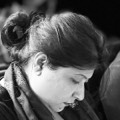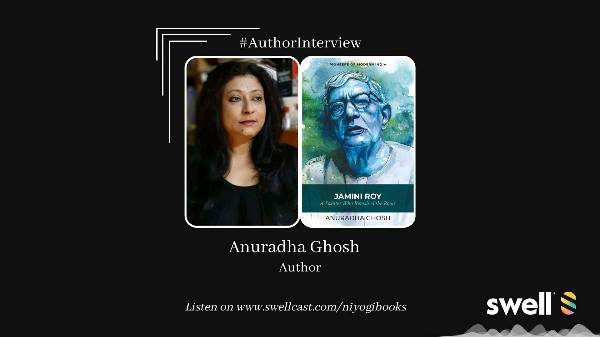
@niyogibooks
Established in 2004, in Delhi, we are an independent publishing house with more than 600 titles—and the list continues to grow.
A Conversation with Anuradha Ghosh around her biography of 'Master Painter' Jamini Roy.
Hello everyone. Today on the Niogi's webcast I have author Anuradha Ghosh join me as we discuss her latest book Jamini Roy a painter who revisited the roots. Her book is a well researched and easily readable biography of artist Jamini Roy who was honored with the Padma Bhushan in 19th 55 and had his artwork declared as a national treasure by the government of India in 1976

Anuradha Ghosh
@Anuradha · 5:00
And you could say that my research involved reading, of course reading the previous biography, but at the same time also reading the memoirs and other stuff that are available. Little difficult to find, but then they are available. And if you look at the book carefully enough, you'll see that there are three chapters actually

Anuradha Ghosh
@Anuradha · 4:19
And since his paintings were low priced also, people could actually buy them. I mean, common people who are not really technically dealers or or collectors of art could actually buy his paintings and enjoy them. We must remember to come back to my earlier point that the Communist Party itself had gone underground from 1934 to 1942, and its mechanisms, therefore understandably, could then be deployed in the cultural field only in a dispersed manner. Their attitudes at that particular time were both anticolonial and antifascist and understandably

Anuradha Ghosh
@Anuradha · 4:48
The flavor is definitely different from the wash paintings of the Neo Bengal School. But there came a point where both these seemed to be derivative to him. All of the artists at that time, and this we must remember that they'd be looking for a sense of identity. I would say the shape of identity, rather, of course, because of the colonial situation, the question of identity has become very, very important

Anuradha Ghosh
@Anuradha · 3:45
Art had a very different kind of an appeal out there. I think they spoke to him not only because of their familiarity, but also because of their sense of continuity and also reassurance. And you could say that it also provided him an alternate aesthetic reality because he'd be going through if you look at it closely, he had gone through two world wars, a famine, and still his universe of art is still so close
Thank you for that. As I was doing my research for this interview, I came across an article where an Indian artist I think his name is Mukulde, says that Roy's line of art preserved a typically Bengali outlook but was an improvement upon the traditional art of Bengal. That opened up a new, new field of art altogether. I would love to have your take on his opinion
Swell Team
@Swell · 0:15

Anuradha Ghosh
@Anuradha · 5:00
If you look at his figures, at his subjects, you'll see that it's connected to the myths, the stories, the whole atmosphere that person growing up in Bengal would be familiar with. I'll just give you an example. He is treating divinities in certain cases but they are always treated as humans. They are always substitute within the relational values of Bengali village life. For example, he paints shaves, he paints

Anuradha Ghosh
@Anuradha · 2:19
So if the people of the household, if they give this group of artists some money, then they would connect to the other world and see that the person in the other world, the deceased status, is, well, unhappy and is well provided for. And only after getting the money would they paint on the eye, indicating now this person is fulfilled and happy in the other world. And we see that Jaminiro's paintings have both kinds of eyes

Anuradha Ghosh
@Anuradha · 4:26
And therefore negotiations that Jamini Roy himself faced about the questions of identity slowly becoming important, becoming relevant in a big way again in our own times. What questions are these? These are questions which involve the interaction, I would say, the interface between the local and the global, the nation and the world. These are conceptual dualities, or shall we conveniently call it dialectics? I think we can, actually. These are things that we must address


